600 yrs Old Ghati Subramanya Temple
The Ghati Subramanya Temple is a Hindu temple dedicated to Lord Karthikeya (also known as Muruga or Subramanya) and Lord Narasimha, situated on the outskirts of Bangalore near Tubagere, Doddaballapura, Karnataka, India. It is a popular pilgrimage center, around 60 kilometers from the city.
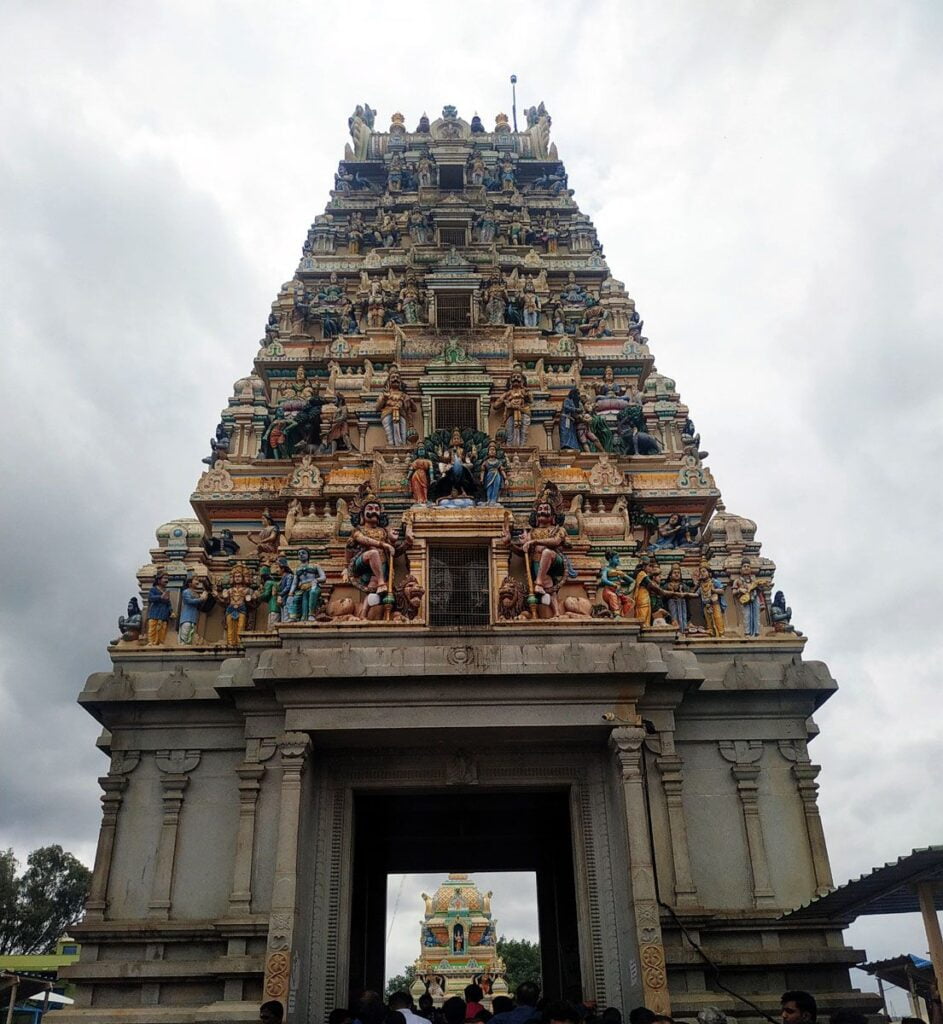
Contents
- 1 History of Ghati Subramanya Temple:
- 2 Legend of Ghati Subramanya Temple:
- 3 Myths and Beliefs associated with Ghati Subramanya Temple:
- 4 Significance of Ghati Subramanya Temple:
- 5 Ghati Subramanya Temple Timing and Rituals:
- 6 Places to visit near Ghati Subramanya Temple:
- 7 FAQ:
- 8 How to reach Ghati Subramanya Temple:
- 9 Google Maps:
History of Ghati Subramanya Temple:
The temple has a recorded history of over 600 years. It was first developed by the Ghorpade rulers of Sandur, who ruled parts of Bellary. The temple is built in the Dravidian style of architecture. The main deity of the temple is a seven-headed cobra form of Subramanya. The idol is made from a single stone and is said to have appeared miraculously.
The temple is a popular pilgrimage destination for Hindus from all over India. It is especially popular for childless couples who pray to Subramanya for the blessing of children. Another popular ritual at the temple is the installation of idols of snakes. It is believed that this ritual will protect the devotee from the wrath of snakes.
Read More>> Shankaracharya Temple | Jyeshteshwara Temple
Legend of Ghati Subramanya Temple:
The tale unfolds with Lord Subramanya, also known as Karthikeya, the son of Lord Shiva and Parvati. In this legend, he takes the form of a seven-hooded serpent, performing penance at the very spot where the temple now stands. His devotion stemmed from a desire to protect the Naga (snake) community from Garuda, the mighty eagle who served as Lord Vishnu’s vehicle.
Lord Subramanya pleaded with his father, Lord Shiva, to intervene. Recognizing his son’s noble intentions, Lord Shiva manifested as Lord Narasimha, the half-man, half-lion avatar of Vishnu. A fierce battle ensued between Narasimha and Garuda, with the former ultimately prevailing and securing safe haven for the Nagas.
The legend doesn’t end there. It is believed that both Lord Subramanya in his serpent form and Lord Narasimha emerged from the earth itself at the site of the temple. This miraculous event adds to the temple’s sanctity and attracts countless devotees seeking blessings and witnessing the divine presence.
The unique bond between Subramanya and Narasimha is reflected in the temple’s architecture. The sanctum sanctorum houses both deities, with Subramanya facing east and Narasimha facing west. To ensure devotees can see both divine figures simultaneously, a large mirror adorns the back wall, symbolizing their harmonious union.
The legend of the Ghati Subramanya Temple transcends mere myth. It speaks of compassion, protection, and the enduring power of faith. This captivating story continues to draw pilgrims from far and wide, weaving together spirituality, history, and architectural marvel into a tapestry of profound significance.
Read More>> 12th Century Babulnath Temple Mumbai
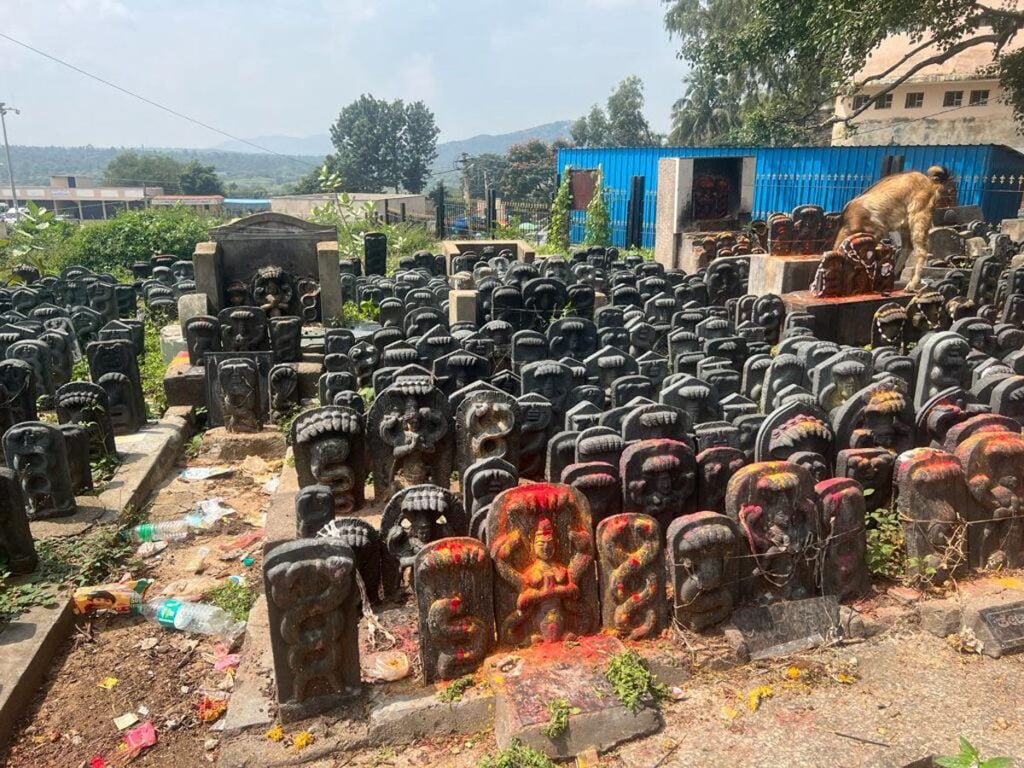
Myths and Beliefs associated with Ghati Subramanya Temple:
Myth of the Nagas:
- The temple is believed to be built on the site of an ancient Naga (cobra) king’s palace. The seven-headed cobra adorning the idol of Kartikeya is said to represent the Naga king, who surrendered his palace to the god.
- This myth is linked to the belief that the temple possesses the power to ward off evil spirits and negative energies. The presence of the Naga king is seen as a protective force, shielding the temple and its devotees from harm.
Blessing of Childlessness:
- A strong belief surrounds the temple’s ability to bless childless couples with offspring. Devotees who make vows (harake) to Lord Subramanya are said to be granted their wish for children.
- This belief is attributed to the legend of Lord Subramanya himself, who was born to help the gods defeat a powerful demon. His divine intervention and victory are seen as a symbol of hope and fertility.
Mirror in the Sanctum Sanctorum:
- A unique feature of the temple is the large mirror placed in the rear of the sanctum sanctorum. This mirror reflects the idol of Lord Narasimha, which faces the opposite direction, allowing devotees to view both deities simultaneously.
- The mirror is believed to hold symbolic significance. It is seen as a representation of the duality of good and evil, with Lord Narasimha symbolizing the fierce aspect of the divine and Lord Subramanya representing the benevolent aspect.
Sacred Water:
- The temple houses a natural spring called the Kumara Dhārā, where devotees collect holy water. This water is believed to possess healing properties and is often used for religious rituals and offerings.
- The spring’s existence further strengthens the temple’s association with fertility and life-giving power.
Cattle Fair:
- The annual cattle fair held in December at the Ghati Subramanya Temple is another significant aspect of the temple’s cultural and religious significance. The fair attracts thousands of farmers and traders from neighboring states, showcasing the temple’s importance as a center of commerce and community.
- The fair is also linked to the belief that Lord Subramanya is the protector of cattle and agriculture. Devotees offer prayers for the well-being of their livestock and seek blessings for a prosperous harvest.
Read More>> Kundrathur Murugan Temple Chennai
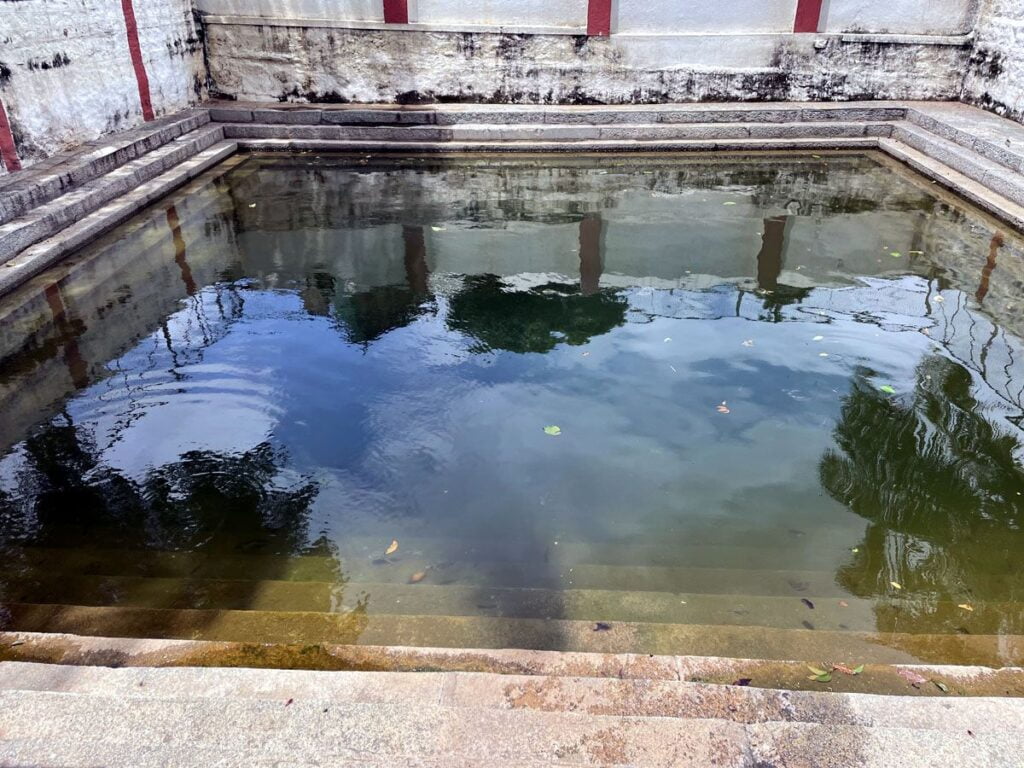
Significance of Ghati Subramanya Temple:
Religious Significance:
- Dedicated to Lord Karthikeya and Lord Narasimha: The temple uniquely houses two powerful deities – Lord Karthikeya (also known as Subramanya), the son of Lord Shiva and Parvati, and Lord Narasimha, an avatar of Lord Vishnu. This combination is rare and considered highly auspicious.
- Mythological Connection: Legend has it that Karthikeya performed penance in the Ghati hills before vanquishing the demon Tarakasura. He also sought protection for serpents from Garuda, the mythical bird, with the help of Lord Narasimha. This association with sacred events adds to the temple’s sanctity. Significance for Snake Worship: Ghati Subramanya is a prominent center for snake worship in South India. Devotees offer prayers and install small snake idols within the temple complex, seeking blessings for progeny, wealth, and protection from evil.
Historical Importance:
- Ancient Origins: The temple boasts a rich history dating back over 600 years. The Ghorpade rulers of Sandur played a crucial role in its development and expansion.
- Self-Manifested Idols: A remarkable aspect of the temple is the belief that both the Karthikeya and Narasimha idols emerged naturally from the earth. This adds to the mystique and spiritual aura of the temple.
Cultural and Social Significance:
- Popular Pilgrimage Center: Ghati Subramanya attracts thousands of devotees throughout the year, especially during festivals like Brahmarathotsava and Narasimha Jayanti. It serves as a vibrant hub for religious gatherings and cultural celebrations.
- Boon for Childless Couples: A strong belief prevails that childless couples who pray at the temple with sincere devotion are blessed with offspring. This faith draws many pilgrims seeking divine intervention.
- Cattle Fair: The annual December fair attracts not only devotees but also agriculturists, cattle rearers, and traders from various states. This lively event fosters economic activity and strengthens social bonds.
Read More>> Arupadai veedu | Six Abodes of Lord Murugan
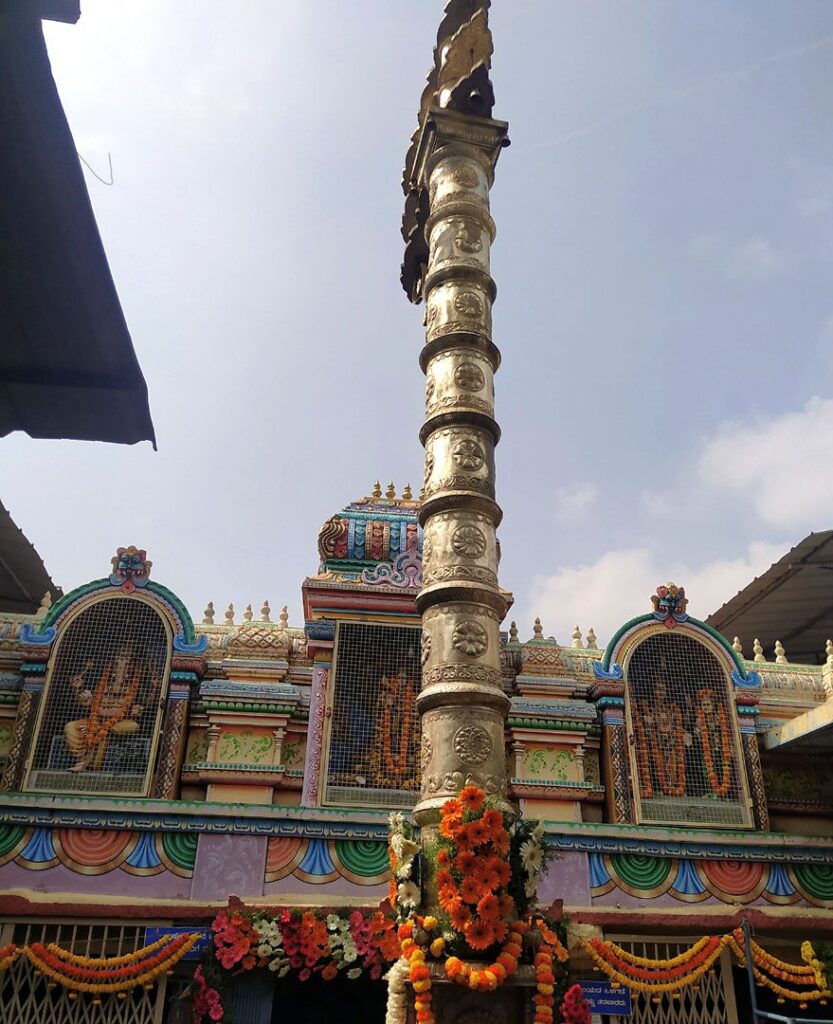
Ghati Subramanya Temple Timing and Rituals:
Timings:
- General Darshan: 6:00 AM to 8:30 PM (Open all days of the week)
- Abhishekam: 8:30 AM to 9:00 AM (Daily, first 10 people can view directly, others can watch through live TV)
- Special rituals on Mondays: Plan your visit accordingly if you wish to witness these.
Important Festivals:
- Pushya Suddha Shasti: Celebrated as Lord Subramanya’s birthday with grand poojas and processions.
- Narasimha Jayanthi: Commemorates the birth of Lord Narasimha, another deity enshrined in the temple.
- Skanda Shasti: A six-day festival honoring Lord Subramanya.
- Panghuni Uttiram: Celebrates the marriage of Lord Subramanya.
- Vaikashi Vishakam: An auspicious day for seeking blessings.
Rituals:
- Suprabhata Seva: The day begins with this ritualistic waking-up of the deities, accompanied by devotional hymns and songs.
- Nitya Pooja: Various poojas are performed throughout the day, offering prayers and food to the deities.
- Abhishekam: A sacred bath for the deities with milk, ghee, panchamrita (five nectars), and other holy substances.
- Arati: The waving of lighted lamps before the deities, signifying reverence and offerings.
- Prasadam: The offering of blessed food to devotees after the poojas.
Read More>> Bahula Temple | Bahula Shaktipeeth
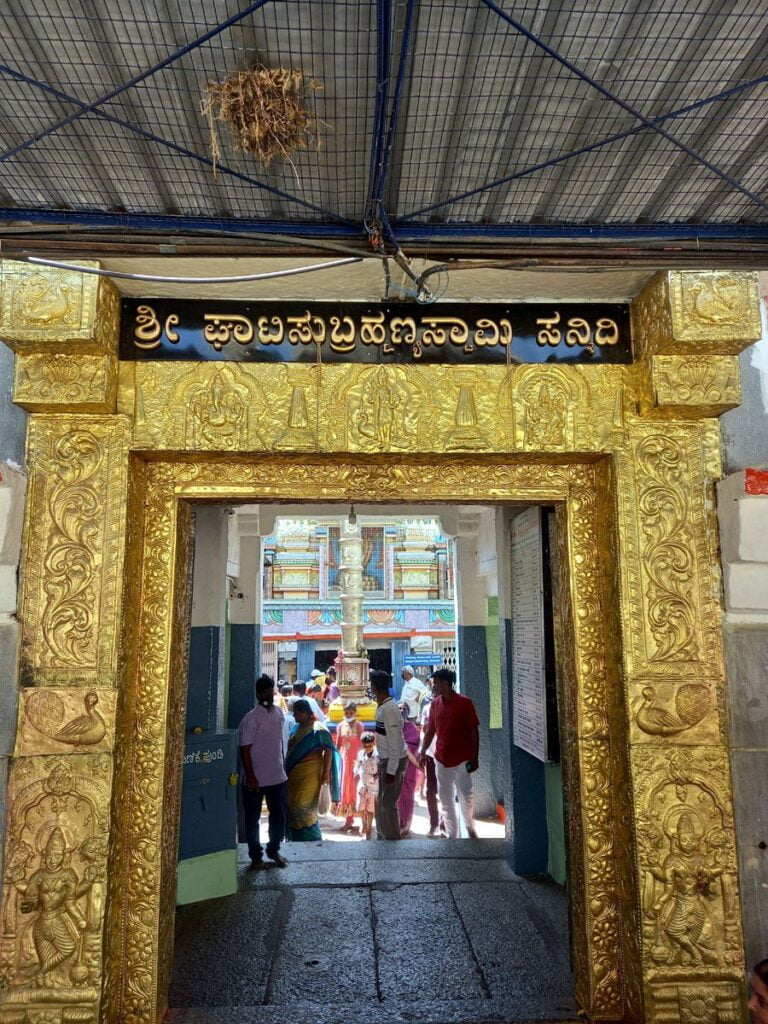
Places to visit near Ghati Subramanya Temple:
- Nandi Hills: Approximately 35 kilometers from Ghati Subramanya, Nandi Hills is a famous hill station known for its breathtaking views, cool climate, and historical significance. It’s a great place for nature lovers and those seeking a peaceful getaway.
- Lepakshi: Located around 85 kilometers from Ghati Subramanya, Lepakshi is known for its Veerabhadra Temple, a stunning 16th-century temple known for its intricate architecture and famous hanging pillar. The town also has other historical and architectural attractions.
- Skandagiri Hills: Also known as Kalavara Durga, Skandagiri is a hill fortress located around 70 kilometers from Ghati Subramanya. It’s a popular trekking destination, offering panoramic views of the surrounding landscape.
- Muddenahalli: Situated around 60 kilometers away, Muddenahalli is known for being the birthplace of Sir M. Visvesvaraya, a prominent engineer and statesman. You can visit the Visvesvaraya Memorial and other historical sites in the area.
- Devarayanadurga: Located about 70 kilometers from Ghati Subramanya, Devarayanadurga is a hill station known for its temples and scenic beauty. The Bhoga Narasimha Swamy Temple and the Yoga Narasimha Swamy Temple are popular attractions here.
- Shivagange: Approximately 60 kilometers from Ghati Subramanya, Shivagange is a hill situated in the Tumkur district. It’s known for its Shiva temple, scenic beauty, and trekking opportunities.
- Nelamangala: If you’re interested in exploring a local town, Nelamangala is around 25 kilometers away. It has its own historical and cultural significance, and you can explore local markets and attractions.
FAQ:
Where is Ghati Subramanya Temple located?
Ghati Subramanya Temple is located in Doddaballapura Taluk of Bangalore Rural District in Karnataka, India. It is about 60 km from Bangalore city. The temple is located on a small hillock on the Bangalore-Hindupur Road.
How do I get to Ghati Subramanya Temple?
There are a few ways to get to Ghati Subramanya Temple. You can drive or take a bus.
- By car: If you are driving from Bangalore, take the Bangalore-Hindupur Road. The temple is about 60 km from Bangalore city. The temple is well-signposted, so you should not have any trouble finding it.
- By bus: There are several bus services that operate between Bangalore and Ghati Subramanya Temple. You can catch a bus from Majestic Bus Station or from Doddaballapura Bus Station. The journey takes about 2 hours.
What are the opening hours of Ghati Subramanya Temple?
The temple is open from 6:00 AM to 10:00 PM every day. The temple is busiest on Tuesdays, which is considered to be an auspicious day for Lord Subramanya.
What are the important festivals celebrated at Ghati Subramanya Temple?
The following are some of the important festivals celebrated at Ghati Subramanya Temple:
- Shivaratri: This festival is celebrated in February or March. It is a 10-day festival dedicated to Lord Shiva.
- Pongal: This festival is celebrated in January or February. It is a harvest festival celebrated by people of Tamil Nadu and Karnataka.
- Ugadi: This festival is celebrated in April or May. It is the New Year’s Day for people of Karnataka and Andhra Pradesh.
What are the rituals and offerings at Ghati Subramanya Temple?
The following are some of the rituals and offerings that are performed at Ghati Subramanya Temple:
- Puja: Puja is a ritual performed to worship the deities. It includes offerings of flowers, fruits, and incense.
- Abhishekam: Abhishekam is a ritual in which the deities are bathed in milk, water, or other liquids.
- Archana: Archana is a ritual in which the devotees offer prayers to the deities.
- Havan: Havan is a ritual in which the devotees offer prayers to the deities through the burning of fire.
- Nivedyam: Nivedyam is a ritual in which the devotees offer food to the deities.
What are the dress codes for Ghati Subramanya Temple?
There is no dress code for Ghati Subramanya Temple. However, it is respectful to wear modest clothing that covers the shoulders and knees.
What are some tips for visiting Ghati Subramanya Temple?
Here are some tips for visiting Ghati Subramanya Temple:
- Wear comfortable shoes. The temple is located on a hillock, so you will be doing a lot of walking.
- Bring sunscreen and a hat. The weather can be hot, so it is important to protect yourself from the sun.
- Bring water. It is important to stay hydrated, especially if it is hot outside.
- Be respectful of the temple and its devotees. Speak quietly and avoid making any loud noises.
Which day is good to visit Ghati Subramanya?
The best day to visit Ghati Subramanya Temple depends on your priorities and preferences:
Auspiciousness:
- Tuesday: Tuesday is generally considered the most auspicious day to visit, dedicated to Lord Subramanya. You can expect a more vibrant atmosphere and potentially longer wait times for darshan.
Crowd levels:
- Weekday: If you prefer a calmer experience with shorter waits for darshan, consider visiting on a weekday (except Tuesday).
- Weekend: Weekends tend to be busiest, especially Sundays.
How to reach Ghati Subramanya Temple:
By Air:
- The nearest airport is Kempegowda International Airport (BLR) in Bangalore.
- From the airport, you can hire a taxi or use other transportation options to reach Ghati Subramanya Temple. The temple is approximately 70 kilometers away from the airport.
By Train:
- The nearest major railway station is Bangalore City Junction.
- From Bangalore, you can hire a taxi or take a bus to reach Ghati Subramanya Temple. The temple is around 60 kilometers away from Bangalore.
By Road:
- Ghati Subramanya Temple is well-connected by road, and you can reach there by car, taxi, or bus.
- If you are driving from Bangalore, take the NH44 (National Highway 44) towards Doddaballapura.
- After reaching Doddaballapura, follow the signs leading to Ghati Subramanya Temple.

One Comment